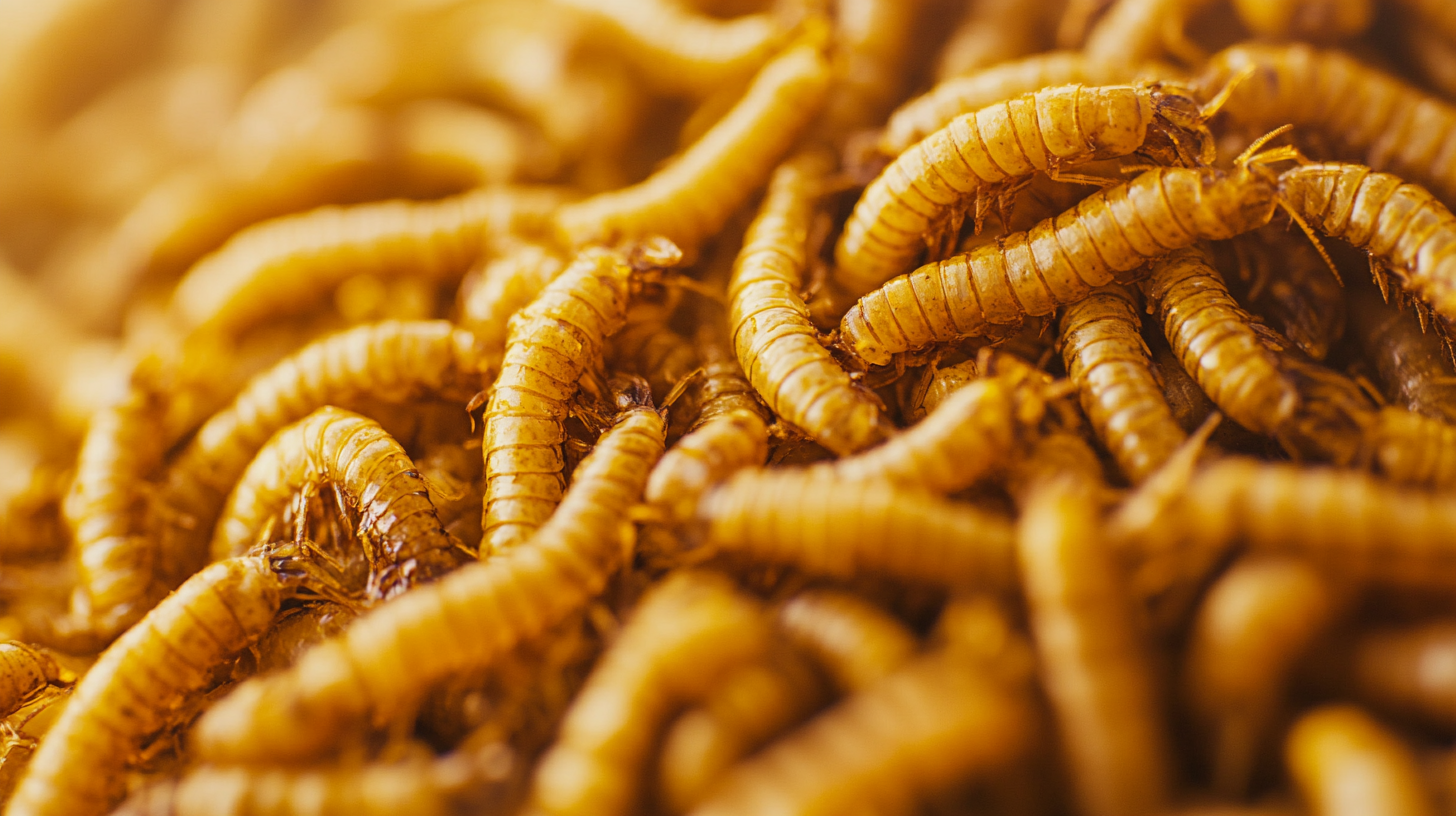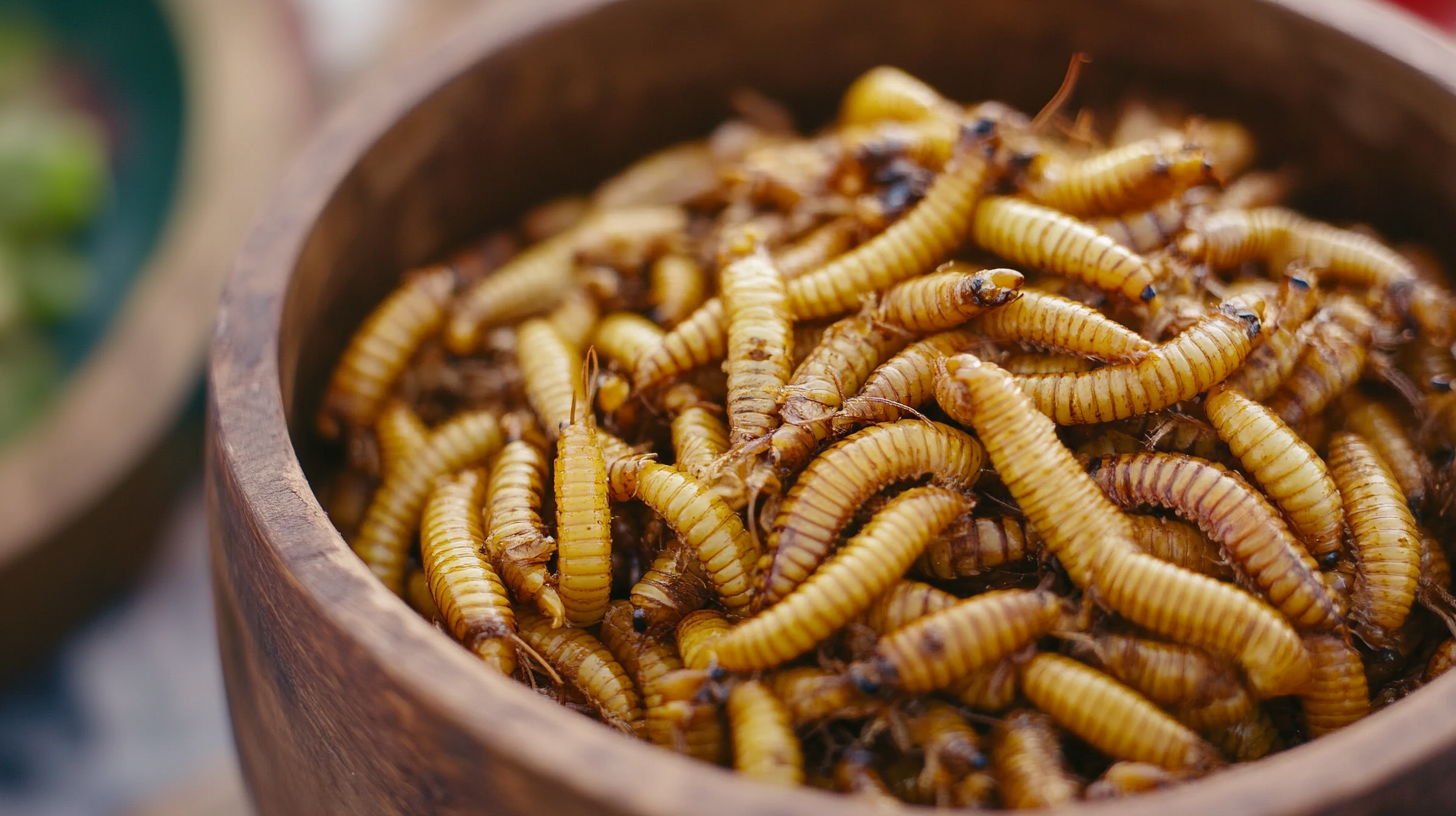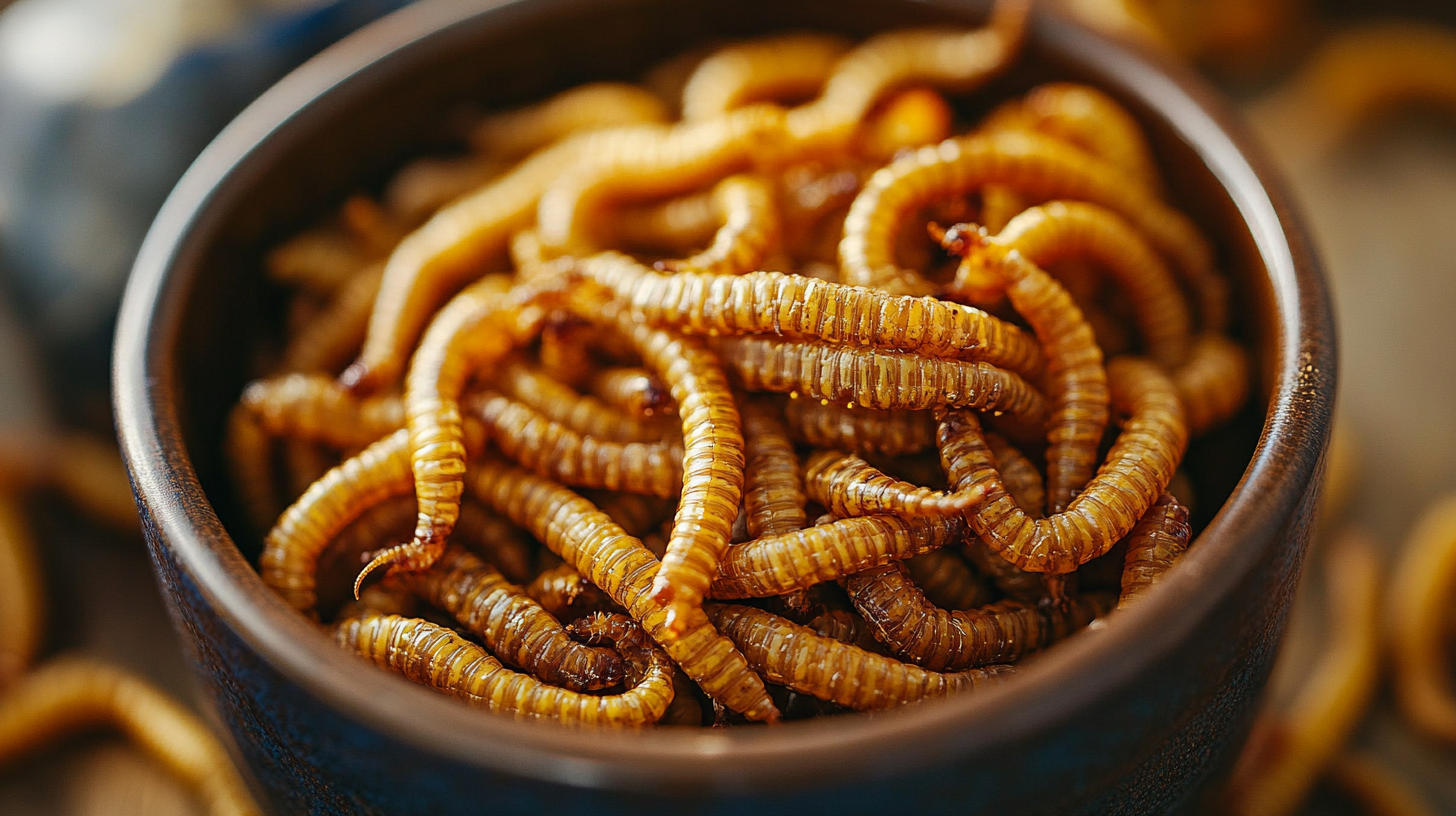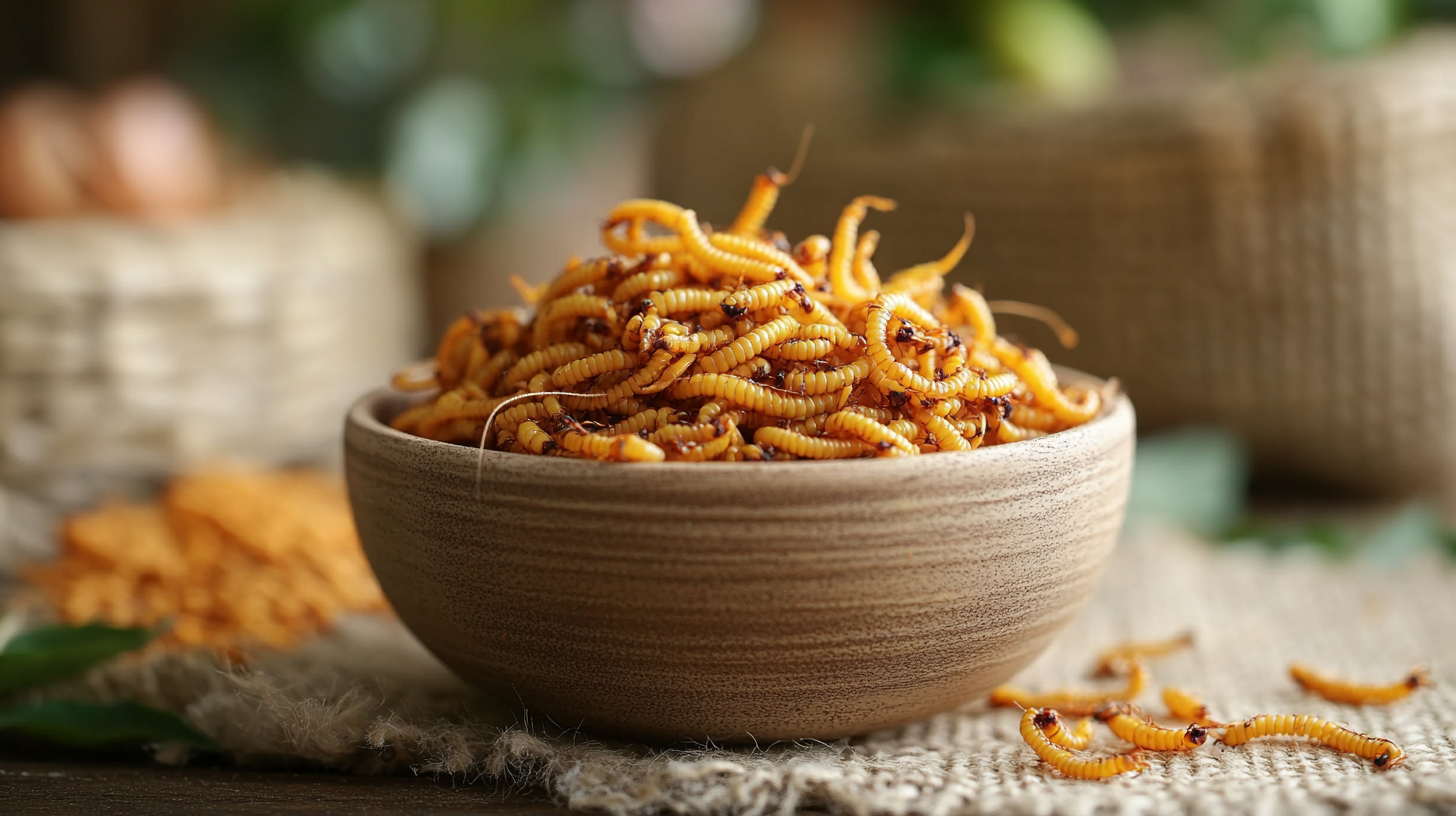In the quest for sustainable protein sources, the spotlight is increasingly turning towards innovative alternatives that can meet the growing global demand for food while minimizing environmental impact. Among these alternatives, the Dried Yellow Mealworm has emerged as a star player. Packed with high-quality protein, essential amino acids, and numerous health benefits, this versatile insect not only supports nutritional needs but also offers a sustainable solution to traditional livestock farming challenges.
Furthermore, the cultivation of Dried Yellow Mealworms utilizes significantly fewer resources, such as land and water, compared to conventional animal farming. As concerns about climate change and food security grow, the potential of Dried Yellow Mealworms as a viable protein source presents an exciting opportunity for both consumers and the agricultural industry. This blog will delve into the multitude of advantages that come with incorporating Dried Yellow Mealworms into our diets and explore how they can play a pivotal role in shaping a sustainable and resilient food system for the future.

Dried yellow mealworms (Tenebrio molitor) are emerging as a formidable source of sustainable protein, making them an increasingly popular ingredient in various diets. These mealworms are not only rich in protein—comprising up to 60-70% of their dry weight—but they also boast an impressive amino acid profile, surpassed only by traditional protein sources like soy and animal meat. According to a report by the Food and Agriculture Organization (FAO), the world will need to produce 70% more food by 2050 to feed a growing population, and insects like mealworms present a sustainable solution to this challenge. Incorporating dried yellow mealworms into your diet can significantly enhance nutritional intake without the environmental costs associated with conventional livestock farming. The production of mealworms requires far less land, water, and feed compared to cattle, with the FAO stating that insect farming can produce up to 12 times more protein per unit of feed than traditional livestock. This not only contributes to food security but also helps mitigate the adverse impacts of climate change. Furthermore, dried yellow mealworms are a versatile ingredient that can be easily integrated into a variety of dishes, from protein bars to baked goods. Their high content of essential fatty acids, vitamins such as B12, and minerals like iron and zinc enhances not just protein content but overall nutritional value. As consumer awareness of sustainable food sources grows, incorporating dried yellow mealworms into everyday diets represents a forward-thinking decision for health-conscious and environmentally responsible individuals alike.

Dried yellow mealworms (Tenebrio molitor) are gaining attention as a sustainable source of protein, especially when evaluated through their nutritional profile. These larvae stand out not only for their rich protein content but also for their impressive digestibility, which has been shown to provide a good-to-excellent protein quality as demonstrated by in vitro Digestible Indispensable Amino Acid Score (DIAAS) analyses. This makes mealworms an attractive option for both human consumption and animal feed, addressing the growing demand for high-quality protein sources in a world increasingly concerned about sustainability.
Recent studies further underline the benefits of incorporating mealworm larvae into diets. For example, breads enriched with yellow mealworm powder have displayed significant increases in protein and lipid content, illustrating their potential to enhance nutritional profiles of various food products. In addition to their impressive amino acid composition, mealworms also promote greater bioavailability of essential minerals, making them a functional ingredient not only in baked goods but also in a wide array of food applications. This aligns perfectly with the global trend towards integrating sustainable, insect-based proteins into everyday diets, providing consumers with delicious and healthful options.
As we explore the nutritional benefits of yellow mealworms, it becomes clear that these small larvae hold immense potential in addressing food security and environmental sustainability. With their rich protein composition and ability to thrive on diverse larval diets, mealworms present a unique opportunity to reshape our food systems and enhance our diets with sustainable, nutrient-rich ingredients.

Dried yellow mealworms are emerging as a sustainable alternative in the quest for eco-friendly food systems. Their cultivation demands significantly less land, water, and feed compared to traditional livestock. For instance, while raising cattle necessitates extensive pastures and copious amounts of grain, mealworms thrive on organic waste and can be reared in compact spaces, making them an efficient protein source. This remarkable ability to convert organic materials into high-quality protein not only reduces waste but also addresses the ever-growing global demand for sustainable food production.
Moreover, mealworms emit fewer greenhouse gases and contribute minimally to environmental degradation. Their farming can alleviate the pressure on our planet’s natural resources while providing a resilient food source that is adaptable to various climates. By embracing dried yellow mealworms, consumers and industries alike can play a pivotal role in reducing their carbon footprint. Their incorporation into diets as a protein source can lead to a significant shift towards more sustainable eating habits, fundamentally changing the way we think about nutrition and food production.
As awareness around sustainability grows, the culinary potential of mealworms is also being explored. From protein bars to gourmet dishes, these nutrient-rich insects can easily be integrated into various culinary applications. By diversifying our protein sources with mealworms, we not only promote a more sustainable food system but also pave the way for innovative and environmentally friendly eating practices that resonate with today's eco-conscious consumers.

When discussing sustainable protein sources, dried yellow mealworms emerge as a compelling alternative to traditional protein sources like beef, chicken, and plant-based options. One of the most significant advantages of mealworms is their impressive feed conversion efficiency. These little creatures require far less land, water, and feed to produce the same amount of protein compared to livestock. For instance, it takes approximately 10 kg of feed to produce 1 kg of beef, while mealworms only require about 2 kg of feed for the same output. This stark difference highlights mealworms' potential in significantly reducing environmental strain.
Moreover, dried yellow mealworms are rich in essential nutrients. They boast high protein content, often around 50-60%, and are packed with beneficial fatty acids, vitamins, and minerals. This nutrient density makes mealworms not only a sustainable protein option but also a highly nutritious one. In contrast, while conventional protein sources may vary in nutrient profiles and require processing, mealworms provide a straightforward, whole-food solution that can easily be incorporated into various diets.
Another aspect to consider is the biodiversity benefits offered by mealworm farming. Rearing mealworms has a much lower ecological footprint compared to traditional animal husbandry. They produce minimal greenhouse gas emissions and can be farmed in controlled environments, reducing the risks associated with animal disease outbreaks. As consumers seek more sustainable lifestyles, embracing dried yellow mealworms could be a pivotal shift in how we address the growing demand for protein. This protein source not only aligns with eco-friendly practices but also offers an innovative pathway towards a sustainable food future.
Dried yellow mealworms are emerging as a versatile ingredient in the world of sustainable protein sources. Their culinary potential is vast, offering a unique texture and flavor profile that can enhance everyday meals. As we explore creative ways to incorporate mealworms into our diets, the possibilities expand—not only for our health but also for environmental sustainability.
Studies suggest that insects, including mealworms, are an excellent alternative protein source, providing up to 60% protein. With a lower carbon footprint than traditional livestock and significantly reduced water usage, mealworms are an eco-friendly addition to our meals. For instance, a recent report from the Food and Agriculture Organization highlights that crickets require only 1,700 liters of water for every kilogram produced, compared to 15,500 liters for beef.
Incorporating dried mealworms into daily recipes can be as simple as adding them to smoothies for a protein boost, using them as a topping for salads, or mixing them into baked goods like muffins and bread. Their nutty flavor can enhance both savory and sweet dishes, making them a flexible ingredient for home cooks and professional chefs alike. Given the growing interest in plant-based diets, mealworms provide a complementary protein source that aligns with current culinary trends, potentially transforming our approach to food.
